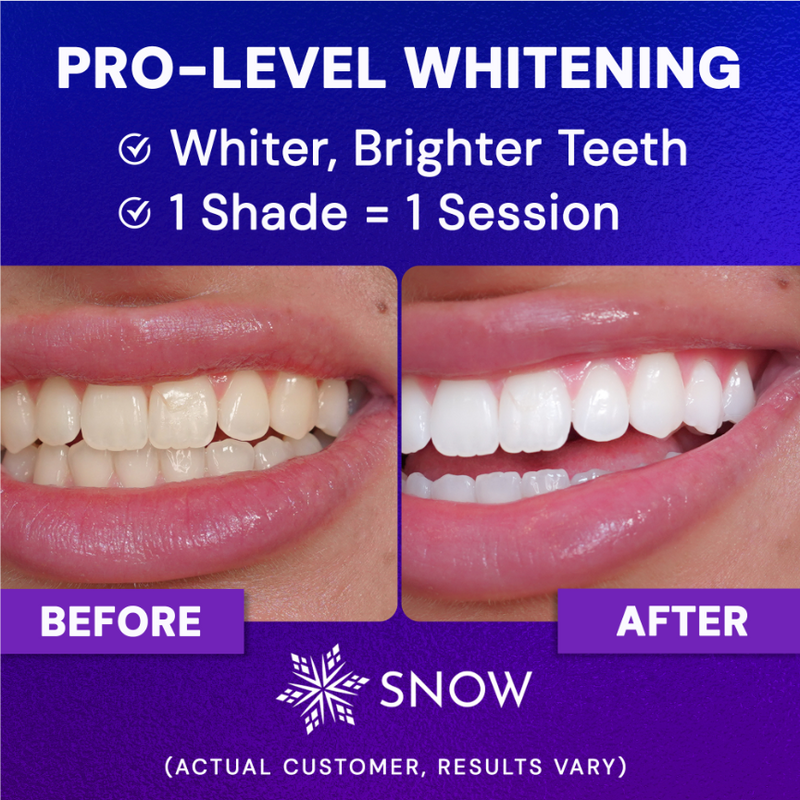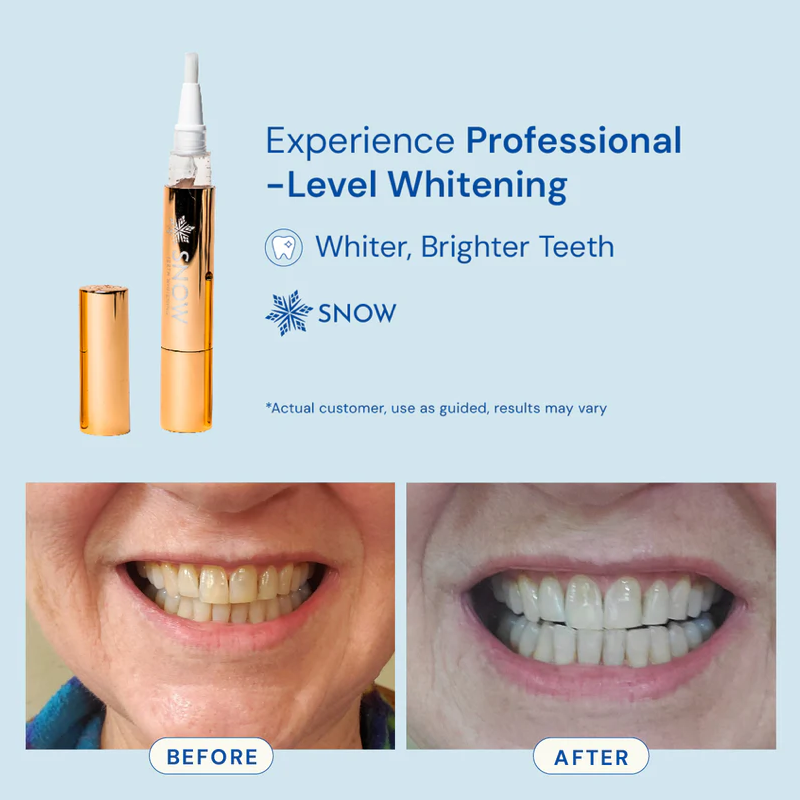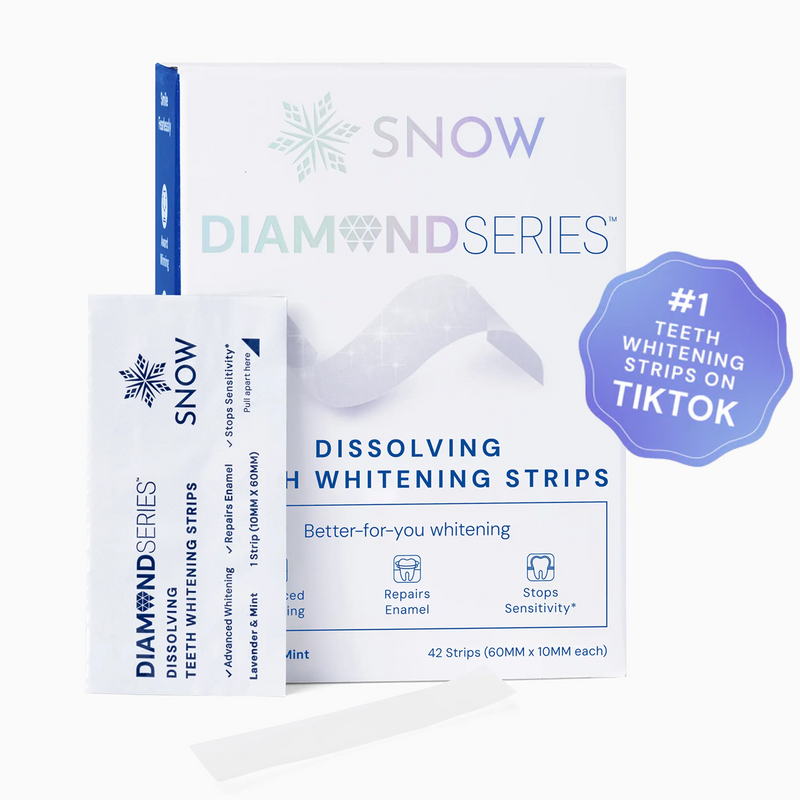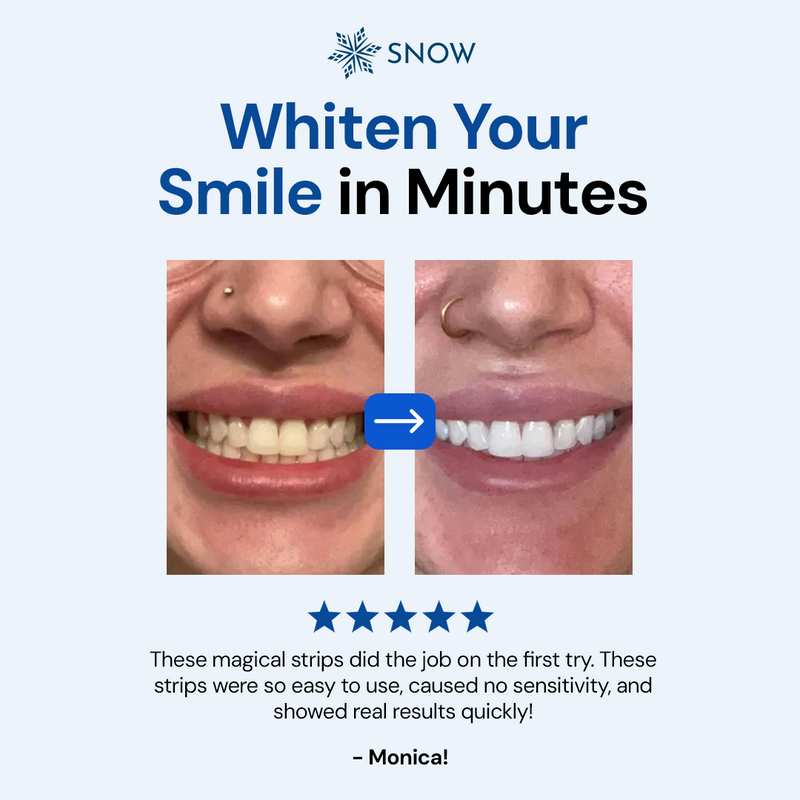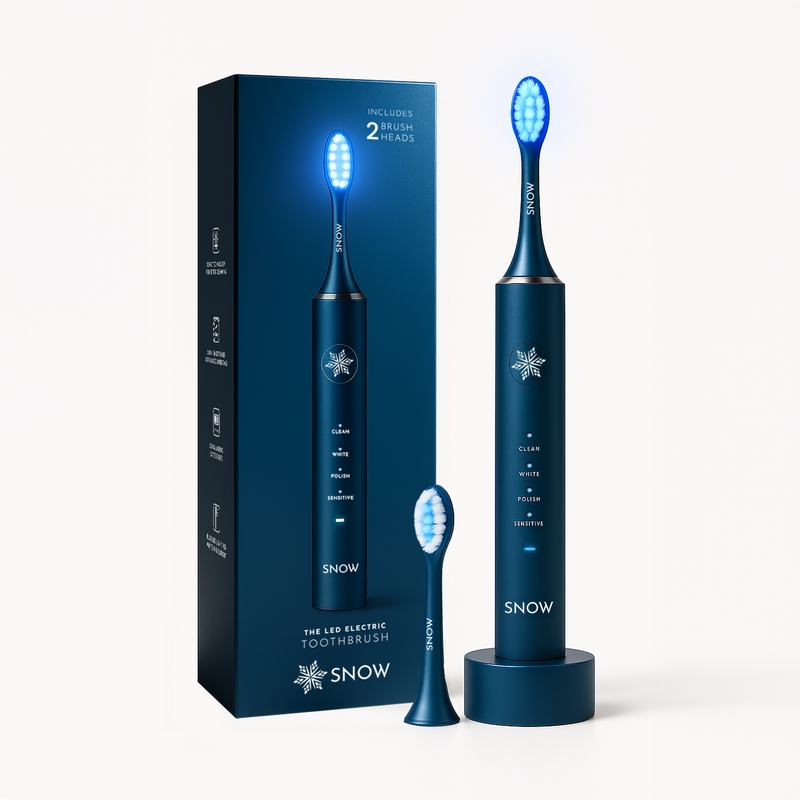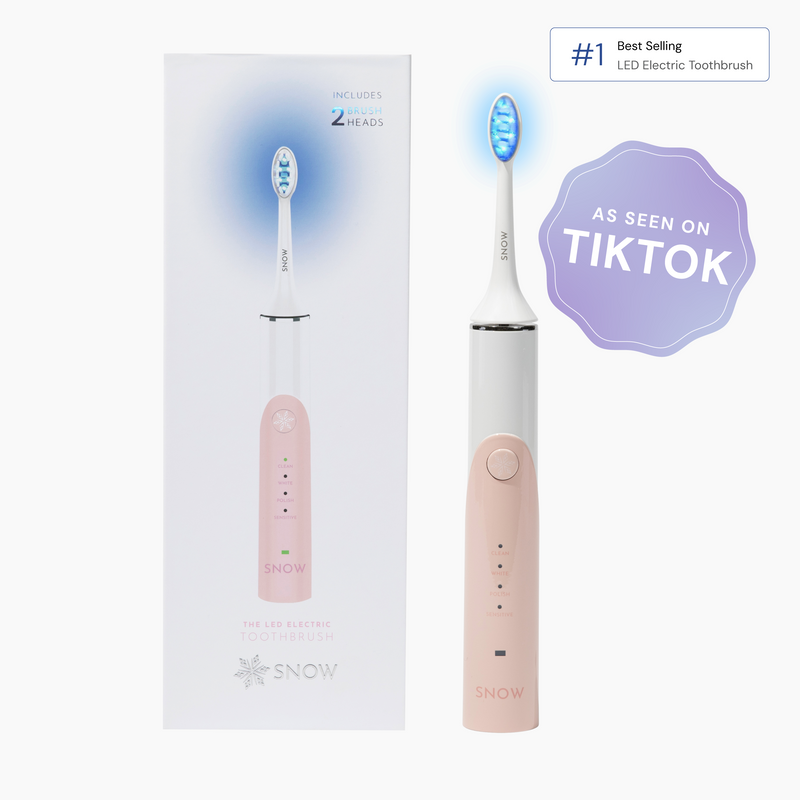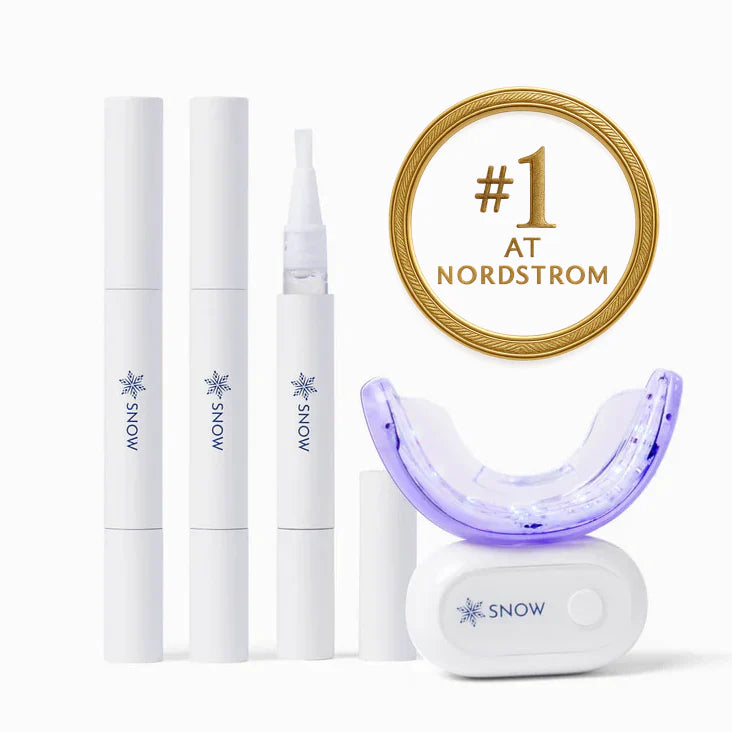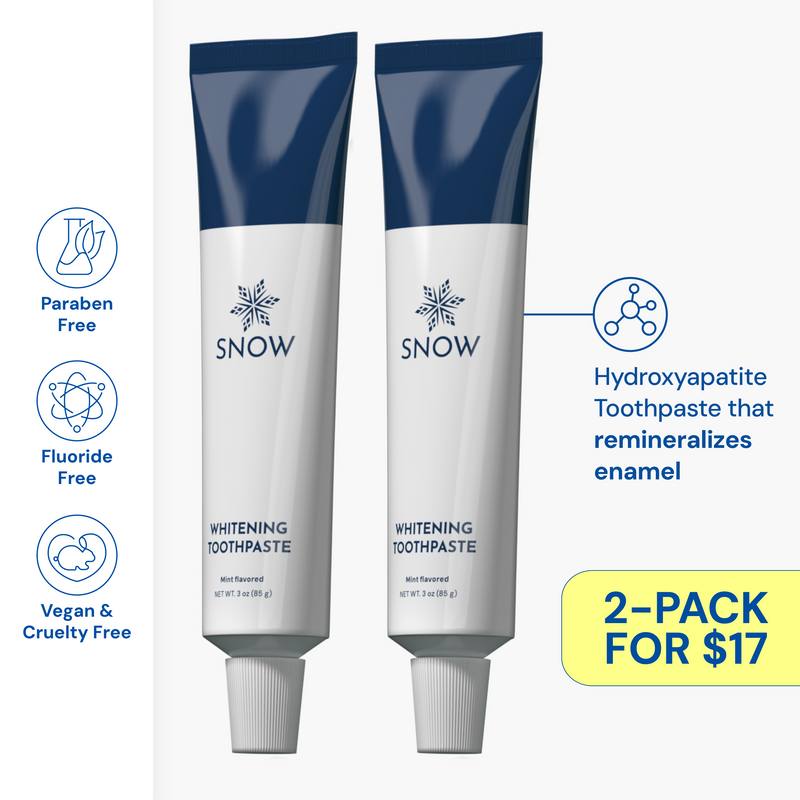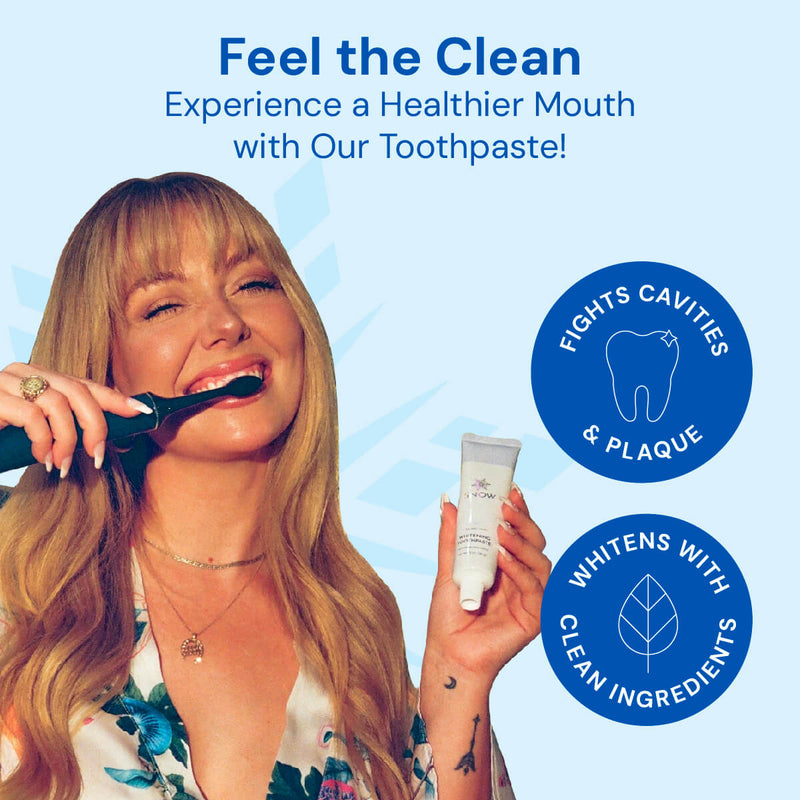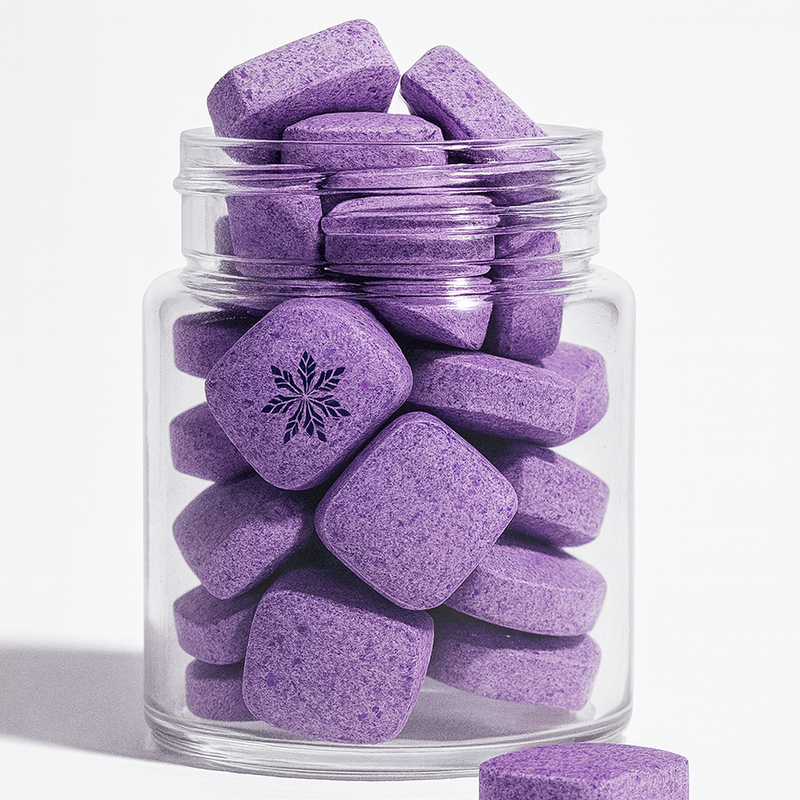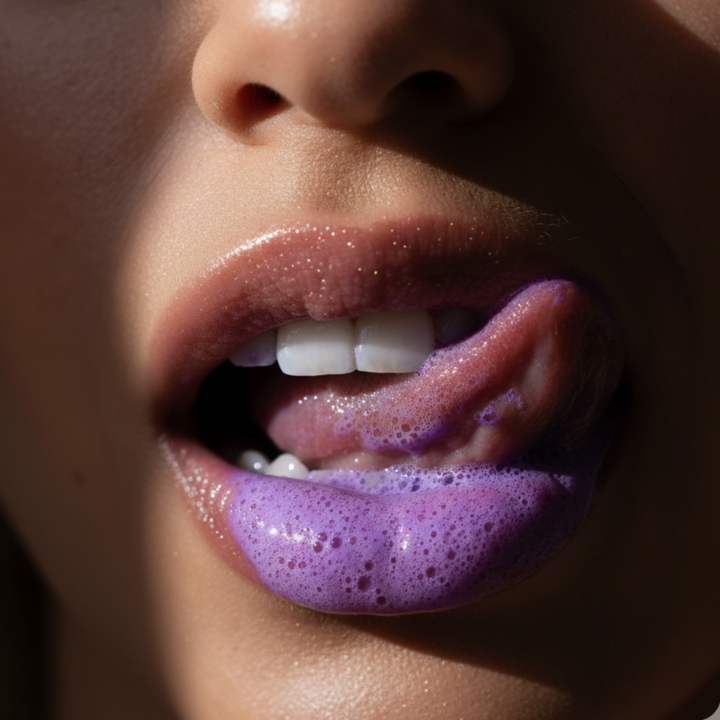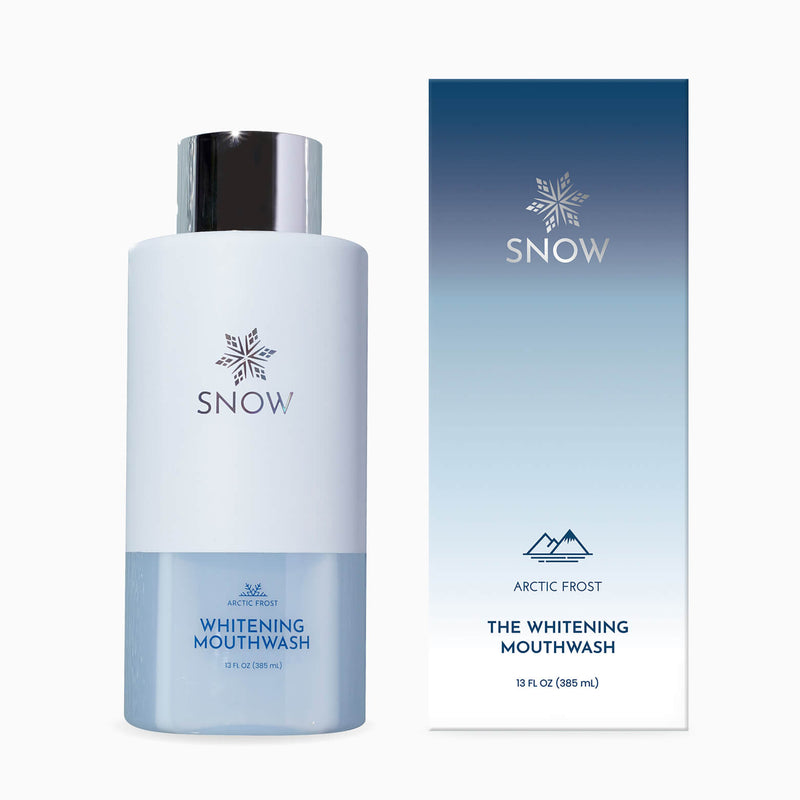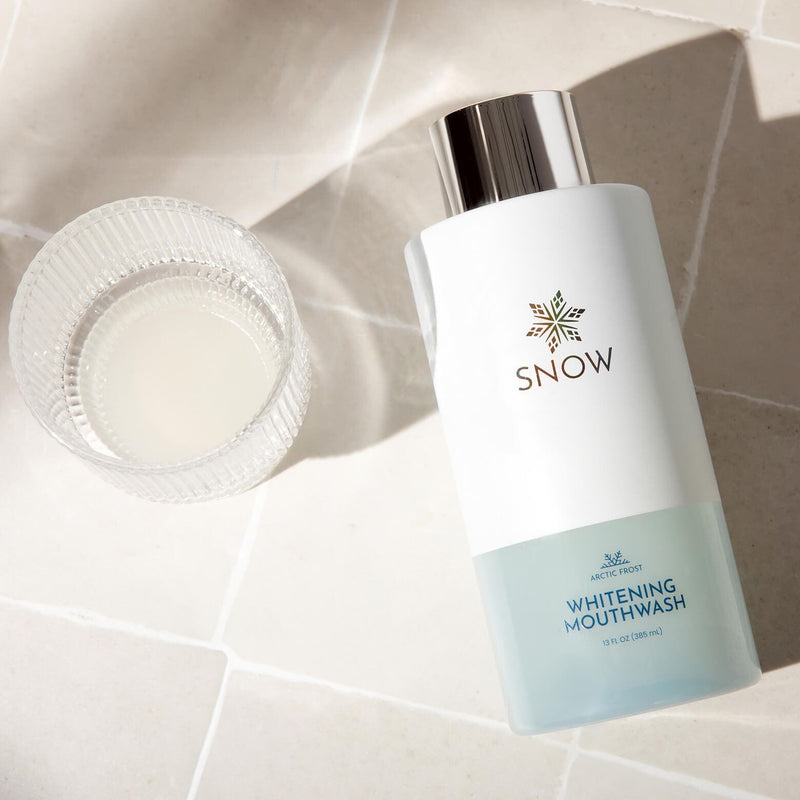Welcome to our comprehensive guide on Tooth Stain vs Cavity! In this article, we'll delve into the crucial differences between tooth stains and cavities, two common dental issues often confused with each other. Understanding this distinction is key to effective oral care and achieving a radiant smile.
We'll explore the causes, prevention methods, and treatment options for both, providing you with expert insights and practical advice. Whether you're dealing with unsightly stains or concerned about cavities, this article is your go-to resource for all things related to dental health and at-home teeth whitening.
Get ready to unlock the secrets to a healthier, brighter smile with SNOW!
What this article covers:- Is It a Cavity or a Stain? Tooth Stains vs. Cavities
- What Should I Do If I Have a Tooth Stain?
- What Can Cause Tooth Stains and Cavities?
- How Can I Help to Prevent Tooth Stains and Cavities?
- Tooth Stains vs. Cavities FAQs
Is It a Cavity or a Stain? Tooth Stains vs. Cavities
In the world of dental health, distinguishing between a cavity and a tooth stain is essential.
At SNOW, we understand the importance of this distinction for effective oral care.
So, is it a cavity or a stain?

What Is The Difference Between A Cavity And A Stain?
A cavity, scientifically known as dental caries, is a sign of tooth decay. This condition occurs when bacteria in your mouth produce acids that erode the tooth enamel, potentially leading to more severe dental issues if left untreated. Cavities are not just a cosmetic concern but a health issue that necessitates professional dental care.
Conversely, a tooth stain is a cosmetic issue that affects the appearance of your teeth. These stains can be extrinsic, lying on the surface, or intrinsic, embedded within the tooth structure. Extrinsic stains are commonly caused by certain foods, drinks, and lifestyle habits, and are typically treatable with at-home whitening solutions. Intrinsic stains might require more intensive treatments.
Understanding this difference is crucial because it guides the appropriate treatment approach. While cavities require dental intervention, tooth stains can often be effectively managed with our SNOW whitening products, designed to safely and effectively enhance your smile.
If in doubt, always seek advice from a dental professional. Meanwhile, for those tackling tooth stains, our range of SNOW products offers a convenient and effective solution for a brighter smile.
What Should I Do If I Have a Tooth Stain?
Discovering a tooth stain can be a cause for concern, but it's often a problem that can be easily addressed. At SNOW, we specialize in providing effective solutions for tooth stains, ensuring you can maintain a bright and confident smile.
Tooth stains are typically classified into two categories: extrinsic and intrinsic. Extrinsic stains are surface-level discolorations often caused by external factors like food, drinks, and tobacco. These can usually be removed with good oral hygiene practices, including brushing with a whitening toothpaste.
Intrinsic stains, however, are deeper and may be due to factors like aging, certain medications, or tooth trauma.
For extrinsic stains, our SNOW whitening products are an ideal solution. They are designed to tackle these surface stains effectively, restoring the natural whiteness of your teeth. Our products contain ingredients like hydrogen peroxide, which, as noted by the American Dental Association, is a common bleaching agent that breaks down stains into smaller pieces, making your teeth brighter.
Intrinsic stains can be more challenging to address and may require professional treatment. However, our SNOW teeth whitening kit can still provide noticeable improvements in many cases. It's important to remember that results can vary depending on the type and severity of the stain.
If you're unsure about the nature of your tooth stain or the best course of action, we recommend consulting with a dental professional. They can provide a thorough examination and advise on the most suitable treatment, whether it's a professional procedure or an at-home whitening product like ours.
So, if you have a tooth stain, don't worry! Start with good oral hygiene and consider using SNOW's at-home whitening products for extrinsic stains. For intrinsic stains or more severe discolorations, consult with your dentist for the best treatment plan.
What Can Cause Tooth Stains and Cavities?
Understanding the causes of tooth stains and cavities is essential for maintaining a healthy and bright smile. At SNOW, we're dedicated to providing not just effective whitening solutions, but also valuable information to help you take the best care of your teeth.
Cavities
Cavities are a common dental problem caused by tooth decay, which is the result of plaque build-up. Plaque is a sticky film of bacteria that forms on your teeth. When you consume sugary or starchy foods, these bacteria produce acids that attack the tooth enamel.
Over time, this acid can erode the enamel and lead to the formation of cavities. It's important to manage plaque through regular brushing, flossing, and dental check-ups to prevent cavities.
Tooth Stains
Tooth stains, in contrast, are usually an aesthetic concern rather than a health issue. They can be caused by various factors, including lifestyle choices like smoking or consuming stain-causing beverages such as coffee, tea, and red wine. Certain medications and aging can also contribute to tooth discoloration. Unlike cavities, tooth stains don't damage the tooth structure but can affect the appearance of your smile.
At SNOW, we understand the importance of a bright smile. Our whitening products are designed to address these extrinsic stains effectively, helping you achieve and maintain a whiter smile. For intrinsic stains or more stubborn discolorations, professional dental treatment might be necessary.
So, while cavities are caused by tooth decay and require dental intervention, tooth stains are often the result of lifestyle choices and can be effectively treated with our SNOW whitening products. Regular dental care and good oral hygiene are key to preventing both cavities and stains, ensuring your smile stays healthy and bright.
How Can I Help to Prevent Tooth Stains and Cavities?
At SNOW, we understand that preventing tooth stains and cavities is vital for a healthy and beautiful smile. By adopting a proactive dental care routine, you can effectively safeguard your oral health.
Good oral hygiene is fundamental in preventing both cavities and tooth stains. As highlighted by Healthline, regular brushing and flossing are essential. Brushing twice a day, especially with fluoride toothpaste, is crucial. The Cleveland Clinic supports this, noting the importance of fluoride in strengthening tooth enamel and preventing decay.
Limiting the intake of sugary and acidic foods and beverages is also key, as these can contribute to both cavities and stains.
For tackling tooth stains, consider using our SNOW at-home teeth whitening products. They are designed to safely and gently remove surface stains, enhancing your smile's natural whiteness.
However, remember that while good oral hygiene can significantly reduce the risk of cavities and stains, regular dental check-ups are crucial for maintaining optimal oral health.

Tooth Stains vs. Cavities FAQs
Do Stains Become Cavities?
No, tooth stains do not become cavities. They are two distinct issues. Stains are superficial discolorations, while cavities are structural damages caused by decay.
Can Cavity Stains Be Removed?
Cavity stains, which are actually areas of decay, cannot be removed by whitening. They require dental treatment to repair the damage.
Is A Yellow Stain A Cavity?
Not necessarily. Yellow stains are often just discolorations and can be treated with whitening products. Cavities, however, are characterized by damage to the tooth structure.
Can Tooth Stains Look Like Cavities?
Sometimes. Dark stains can be mistaken for cavities, but they don't have the structural damage associated with decay.
Is Tooth Discoloration Always a Cavity?
No, tooth discoloration is not always indicative of a cavity. It's often just a cosmetic issue that can be resolved with whitening treatments.
What Can Be Mistaken for a Cavity?
Tooth stains, especially darker ones, can sometimes be mistaken for cavities. However, a professional dental examination is necessary to differentiate between the two.
Conclusion
Wrapping up our journey through the nuances of "Tooth Stain vs Cavity," we've explored the differences, causes, and prevention strategies for these common dental issues.
Remember, distinguishing between a cavity and a stain is crucial for appropriate treatment.
While cavities require professional dental care, most tooth stains can be effectively managed with good oral hygiene and at-home solutions like SNOW teeth whitening.
Embrace these insights and tips to maintain a healthy, radiant smile. For a brighter, whiter smile, explore our range of SNOW products today and step into a world of confident, dazzling smiles!
If you enjoyed this article, check out these related posts:
- How to Get Rid of Black Stains on Teeth
- Does Blood Stain Teeth
- Yellow Spots Between Teeth
- How to Fix Stained Teeth
- Types of Stains on Teeth
- Can Hard Water Stain Teeth
- Teeth Stains and Discoloration
- Can Porcelain Teeth Stain
- Why Do Drinks Stain Teeth
- Can You Sleep with Teeth Whitening Strips?
- Can I Drink Water After Teeth Whitening Strips?
- Is It Bad to Use Teeth Whitening Strips Everyday?
- Why Don't Whitening Strips Cover All Teeth?
- Teeth Whitening While Breastfeeding
- Tooth Whitening Pregnant















































